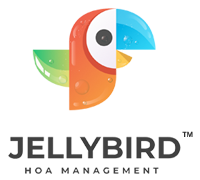Creating the association’s annual budget is one of the most important responsibilities of an HOA board. An effective budget will ensure that the HOA’s day-to-day business items are taken care of and that the association saves enough funds for future repairs and replacements. In this article, we’re going to cover some basic steps for creating and approving an annual budget and provide an example of items typically included in an HOA’s annual budget.
Steps for Creating an Annual Budget
To begin, let’s cover some basic steps for creating an annual budget for an association. Typically, an HOA will begin the budgeting process for the coming year at the beginning of summer.
Step 1: List Expenses
The first step in creating an annual budget is determining what the HOA’s expenses will be in the coming year. To do this, the HOA should compile all the services and costs of the current year and then calculate any increases. For instance, the HOA will want to determine whether any vendor rates will increase when contracts are renewed and whether utility rates have increased since the last budget was created.
Step 2: Calculate the Amount to Transfer to Reserves
After compiling a list of all the HOA’s maintenance expenses, you will need to determine how much money will need to be transferred to the reserve account to cover future repairs and replacements in the community. This number will come from the association’s most recent reserve study. If the association has not had a reserve study conducted in the past 3-5 years, it’s time to schedule an update to ensure that the reserve study’s projections are still accurate.
Step 3: Calculate the HOA’s Projected Income
Once the expenses and reserve funding of the association are determined, it’s time to calculate what the coming year’s income will be. This amount will come primarily from homeowner assessments but could be supplemented by savings accounts that earn interest.
However, when calculating the HOA’s income, it is important not to include items that fluctuate or are otherwise unreliable, such as late fees on homeowner accounts or fines. Additionally, if the HOA has a history of delinquent accounts, these missing funds should be subtracted from the overall income until the accounts have been brought current. In sum, all of the association’s necessary expenses should be funded by its stable income. Unnecessary expenses, such as party refreshments and door prizes for meetings, could be purchased using unreliable sources of income, such as money from violation fines.
If the HOA discovers that its income will not cover its expenses and reserve account funding, there are several steps the HOA can take.
First, the HOA can divide its expenses into a “Needs” column and a “Wants” column. Needs, such as utilities, annual meeting notice mailing costs, and the reserve account, must be funded. However, wants can be ignored until money is available to fund them. Wants include “Yard of the Month” prizes, catering for meetings and social events, and community holiday lights.
The HOA can also negotiate with vendors to see if prices can be lowered, either by changing providers or updating services rendered.
If these approaches are not effective, the HOA may need to charge a special assessment. When proposing a special assessment, the board should send the proposed annual budget to the ownership and explain the situation, detailing the items cut from the budget, the actions taken to lower costs, and why the remaining items cannot be cut.
Step 4: Approve the Annual Budget
Many states require HOA boards to approve the annual budget at an open board meeting. The proposed budget should be sent out along with the meeting notice, and the board should hold a homeowner forum during the meeting to take any homeowner questions or concerns about the budget.
A proposed annual budget should be approved in October of the previous year to give the HOA time to update assessment bills and make any other needed changes.
Items Commonly Included in HOA Annual Budgets
Now that you have an understanding of how an HOA’s annual budget is put together, let’s take a closer look at items that are commonly included in the budget. The list below, along with the HOA’s past approved annual budgets, should give the board a starting point when conducting research for next year’s annual budget:
Income |
| Homeowner Assessments |
| Savings Account Interest |
Expenses |
| Maintenance |
| Electrical Repairs/Maintenance |
| Plumbing Repairs/Maintenance |
| Irrigation Repairs/Maintenance |
| Landscaping Repairs/Maintenance |
| Sign Repairs/Maintenance |
| Gate Repairs/Maintenance |
| Surveillance Camera Repairs/Maintenance |
| Pool Repairs/Maintenance |
| Playground Repairs/Maintenance |
| Miscellaneous Repairs/Maintenance |
| Utilities |
| Electric |
| Water |
| Pool Emergency Telephone |
| Wireless Internet – Clubhouse |
| Administration |
| Printing and Copying |
| Postage/Mailing |
| Office Supplies |
| Collection Fees |
| Association Website |
| Taxes |
| Pool Equipment |
| Committees |
| Social Committee |
| Holiday Lighting Committee |
| Yard of the Month Committee |
| Professional Services |
| HOA Management Fees |
| Audit and Tax Services |
| Legal Services |
| Accounting Services |
| Janitorial Services |
| Landscaping Services |
| Insurance |
| General Commercial Property Insurance |
| General Commercial Liability Insurance |
| Directors and Officers Insurance |
| Workers’ Compensation Insurance |
| Other Expenses |
| Transfer to Reserves |
This overview should help the HOA begin the budgeting process! For more information on association finances, check out our course, Introduction to Association Finances (FIN-101).

